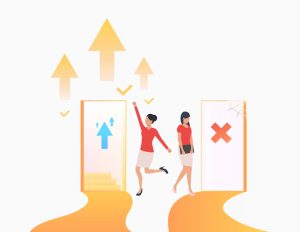Despite the deluge of studies, most people using psychedelics are doing so outside the clinical context. According to one analysis https://southernradiologists.com/what-is-methadone-effects-risks-addiction/ by Columbia University’s Mailman School of Public Health, more than 5.5 million Americans used hallucinogens in 2019, suggesting far more experimentation is happening beyond the research sector. Last November, 54% of Colorado voters approved a measure to legalize medicinal psilocybin.
- It is unknown from these studies whether these individuals were intentionally seeking changes in these specific areas as they embarked on psychedelic use.
- In this review, we focus on the basic neurobiology underlying the action of psychedelic drugs.
- The institute also supports clinical investigations into psilocybin as a therapeutic substance.
- However, at higher concentrations (100 μM), DMT induces the translocation of Sig-1Rs from the MAM to the plasma membrane, leading to the inhibition of ion channels 262,263,265 (Figure 3).
- “We have this interdisciplinary setting, where we have biologists, pharmacologists and chemists all working together with one collective objective, and that objective is to understand, neurobiologically, what’s going wrong in various brain conditions and how can we treat that,” Khatib said.
Navigating the Legal Landscape of Psychedelics and Plant Medicines

To our knowledge, no study has been conducted specifically to investigate lifestyle behaviours such as over-eating and physical activity in relation to psychedelic use. However, some studies have asked participants to report spontaneous changes in various areas of their lives, including in health behaviours, perhaps due to the fact that anecdotal accounts of these phenomena are not uncommon. In fact, it appears that the first studies in alcohol abuse were initiated precisely because of ad hoc observations by some users – notably Leo Zeff, a famous psychedelic clinician, regarding his own smoking cessation success after using a classic psychedelic (c.f. Johnson et al., 2017b). It is also interesting to note that, along with environmental concerns, healthy eating and living more healthfully were popular elements of psychedelic culture from the beginning, at least in some communities (Smith and Sternfield, 1970). Psychedelics have a favourable toxicity profile and therapeutic index (Van Amsterdam et al., 2015), and apparently negligible addiction potential (Rucker et al., 2018). The main hazards relate to the intensity of the altered state of consciousness they produce, particularly at higher doses, and the need for professional supervision under these conditions (Johnson et al., 2008).
5-HT2A Receptor Signaling

In a recent study, cryo-EM structures of LSD-bound HTR2B provided snapshots of LSD’s action. These revealed transitions from transducer-free, partially active states to transducer-coupled, fully active states, highlighting the potential for biased agonists with functional selectivity, which could be safer and more effective drugs for specific G-protein-coupled receptors (GPCRs) 121. Phenethylamines exhibit a greater level of specificity for are psychedelics addictive 5-HT2A, 5-HT2B, and 5-HT2C receptors in comparison to tryptamines and ergolines 3,95.

The Role of Attention in Cognitive Processes: A Comprehensive Guide
For 99% of human history, our species lived as foraging nomads living in small tribes. The bodies we’ve inherited actively resist change because they want to keep us safe, which was wonderful and necessary for that time, but not so helpful now. So even when we can identify issues we’d like to address in our thought and behavior patterns, it is very difficult to change.
What Are Psychedelics? How Do Psychedelics Work?
In June 2022, NIDA’s Office of Translational Initiatives and Program Innovations also announced a new program to support small businesses to develop psychedelic-based therapies for substance use disorders. Clinical trials have shown that psychedelics, especially when used in guided therapy settings, can significantly reduce symptoms of depression and anxiety. Since 1998, millions of parents and adults have trusted ADDitude’s expert guidance and support for living better with ADHD and its related mental health conditions.
Self-Mastery Techniques for Mental Clarity: Transform Your Mind in 2025
- While scientists are still working on these varied psychedelic compounds, the risk looms that abuse potential might come as an inseparable side effect of treatment.
- This altered state of consciousness can lead to “ego dissolution,” where a rigid self-identity temporarily diminishes.
- Whilst there are many different ways to estimate the human-equivalent dose that would produce similar effects, we can say with confidence that this is a strong, though still clinically relevant, dose of psilocybin.
This may produce feelings of reverence or inspiration, disordered thoughts, and visual hallucinations. Wide-scale medical interest in psychedelics first arose in the 1950s and ’60s, and the agents were found to be notably safe, non-addictive, and of potential value for treating a wide range of psychiatric disorders. But by 1970, widespread recreational use of the agents led to a change of public policy, and psychedelic agents were banned, even for research use, first in the United States and then globally, deemed to have “no currently accepted medical use” and a high potential for abuse.
How Psychedelics Impact Mental Health
Ken Jordan, co-founder and CEO of Lucid News, which covers the emerging psychedelics industry, said even in clinical Sober living home environments patients cite their trips among the most profound events of their lives. He believes many people seek similar experiences without a mental health diagnosis and in settings perceived as fun or recreational, or for enlightenment. While non-classical psychedelics may produce similar physical and visual effects, they do not interact as prominently, if at all, with serotonin 2A receptors. Instead, these substances affect other neurotransmitter systems, including dopamine and glutamate.



